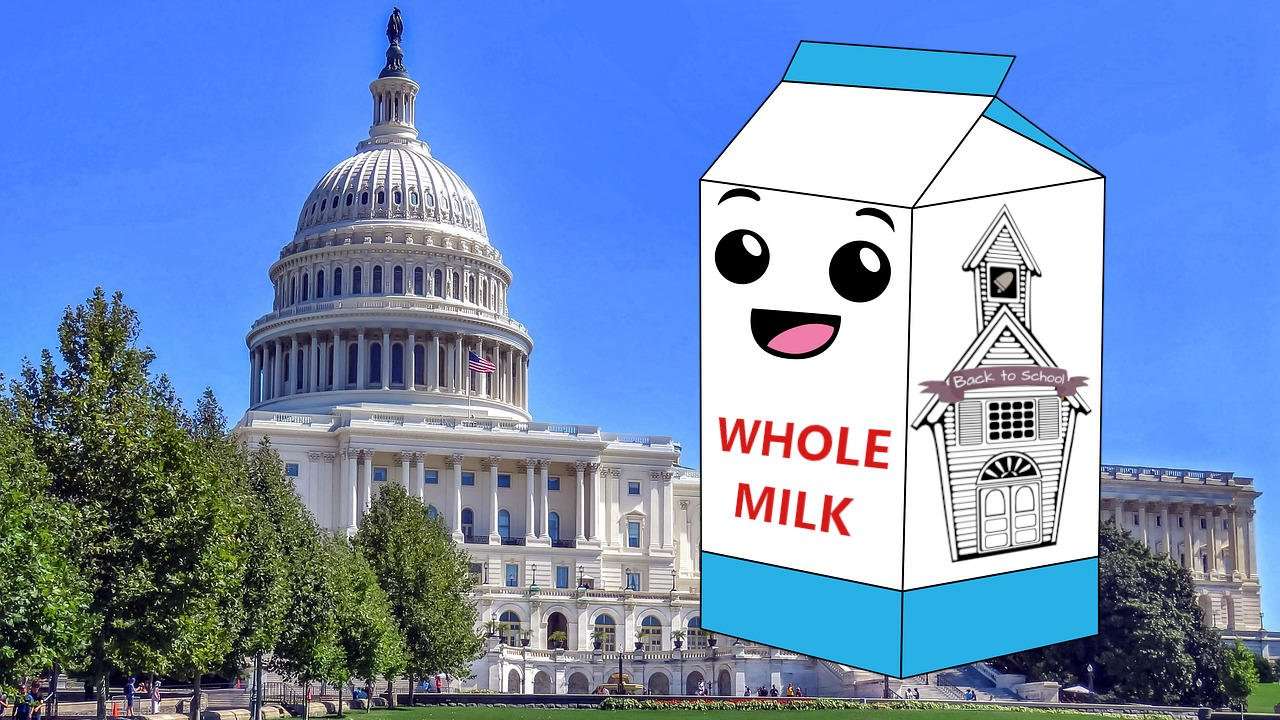Unless you have kids in school or have recently been there yourself, you may not know that kids can’t get whole milk with a school lunch, despite several years of research suggesting whole milk has health benefits beyond a simple fat-and-calories in-or-out decision. That debate is about to get launched far and wide as Congress is expected to soon begin looking at the “Whole Milk for Healthy Kids Act of 2023” which would allow schools to offer whole dairy as a menu option.
Proponents of whole milk say children are much more likely to drink that product than low-fat or skim milk. Which means they get the nutritional benefits of milk. Opponents point to the fat and calorie equation and don’t see any nutritional exchange value. They believe that same nutritional benefit can come from other products.
Like seemingly everything else these days, the two camps are polarized and far apart.

The Whole Milk for Healthy Kids Act of 2023 is a legislative proposal that aims to revise the current requirements for milk provided by the National School Lunch Program (NSLP) of the United States Department of Agriculture (USDA). The bill seeks to allow schools participating in the NSLP to offer whole milk as an option alongside other varieties of milk that are consistent with the most recent Dietary Guidelines for Americans, which still support low or non-fat dairy products.
The introduction of this bill is a response to the growing concern among parents, educators, and legislators about the nutritional adequacy of school meals, particularly the types of milk offered to children. Since the implementation of the Healthy, Hunger-Free Kids Act of 2010, schools have been required to provide low-fat (1%) or fat-free milk to comply with the guidelines aimed at reducing childhood obesity and promoting healthier eating habits.
Proponents of the Whole Milk for Healthy Kids Act of 2023 argue that whole milk provides essential nutrients that are beneficial for children’s growth and development. Milk is a rich source of calcium, vitamin D, and other vital nutrients that contribute to better bone health, lower blood pressure, and a reduced risk of cardiovascular disease or Type 2 diabetes. They contend that whole milk’s higher fat content is necessary for young children’s dietary needs and can lead to improved satiety, which may help prevent overeating and support healthy weight management.

Critics of the bill, however, raise concerns about the potential impact of reintroducing whole milk into schools. They point to the higher calorie and saturated fat content of whole milk compared to its lower-fat counterparts. The Dietary Guidelines for Americans recommend consuming low-fat or fat-free dairy products to maintain a healthy dietary pattern and reduce the risk of chronic diseases associated with high saturated fat intake. But there is ongoing research that suggests whole dairy provides additional nutritional benefits that offset any potential risks — the FDA guidelines are constantly under review (and often behind).
The debate over the Whole Milk for Healthy Kids Act of 2023 reflects a broader conversation about the role of government in shaping children’s diets and the balance between providing nutrient-rich options and addressing public health concerns. As the bill progresses through the legislative process, it will be subject to further scrutiny and discussion among lawmakers, nutrition experts, and the public.
The outcome of this legislation could have significant implications for the NSLP and the health of millions of American children who rely on school meals as a primary source of nutrition. Whether the Whole Milk for Healthy Kids Act of 2023 becomes law will depend on the collective judgment of Congress, informed by scientific evidence, public opinion, and the values that guide the nation’s approach to child nutrition.
It’s an important conversation to be had in the ongoing effort to provide nutritious and appealing food choices in schools. It underscores the need for a nuanced understanding of dietary needs and the importance of offering a variety of options to support the health and well-being of all students.
After all, there’s no use crying over spilt milk, whether it’s whole or fat-free.


